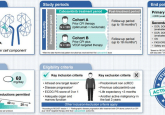Precision oncology: a clinical and patient perspective

Growing interest in identifying and characterizing genomic biomarkers has led to a paradigm shift away from non-specific cytotoxic treatment strategies, toward personalized treatment strategies based on the genomic profile of a tumor. This review article from Future Oncology provides an overview of the current status of precision oncology and what is needed to integrate molecular profiling into the advanced cancer patient journey.
Abstract
Molecular characterization of tumors has shifted cancer treatment strategies away from nonspecific cytotoxic treatment of histology-specific tumors toward targeting of actionable mutations that can be found across multiple cancer types. The development of high-throughput technologies such as next-generation sequencing, combined with decision support applications and availability of patient databases, has provided tools that optimize disease management. Precision oncology has proven success in improving outcomes and quality of life, as well as identifying and overcoming mechanisms of drug resistance and relapse. Addressing challenges that impede its use will improve matching of therapies to patients. Here we review the current status of precision oncology medicine, emphasizing its impact on patients – what they understand about precision oncology medicine and their hopes for the future.
Lay abstract
Precision oncology offers individualized treatment of cancer on a per-patient basis, based on the unique DNA fingerprint of a patient’s cancer. New, advanced technologies for DNA sequencing have led to rapid advancement in developing novel therapies. Decision-making tools have followed pace, leading to improved matching of therapy to patient, ultimately improving outcomes (including quality of life), building trust between patient and physician, and increasing hope for the future.





